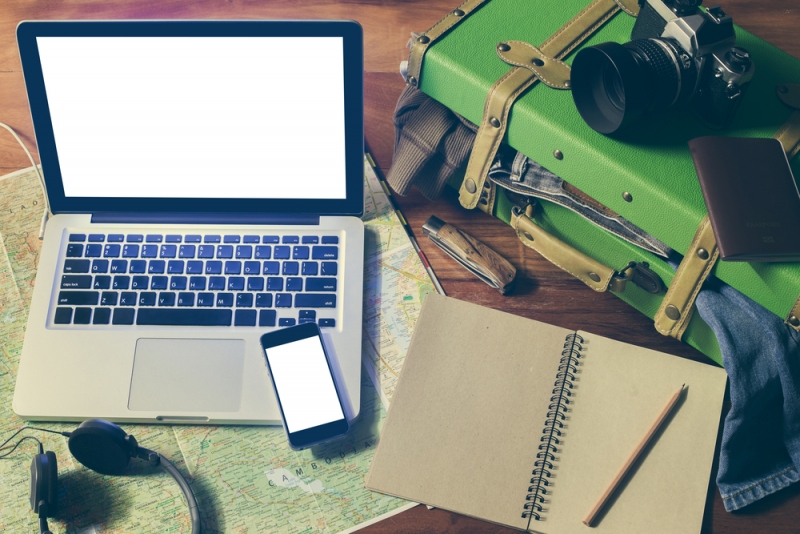We live in the era of digitalization. Even when we travel abroad, we need to bring our electronic devices such as smartphones and laptops with us. Even if we’re away from home we need to stay connected with family, friends and co-workers. After all, how could we take all those nifty Instagram and Facebook pictures of the Taj Mahal if we didn’t bring our cellphone with us?
However, security should be paramount, as these devices are juicy targets for many local and international criminals. Not only do they possess a certain face value (for a pickpocket they may be worth up to $500), but they also represent a goldmine of personal information that can be easily accessed to steal our bank accounts, documents, etc.
Our electronic gadgets are our trusted navigators, companions and communicators. They need to be protected at all times, especially when we’re far from home. Here are 4 rules of thumb for protecting your tech while traveling.
1. Keep them in a safe place
The first, and most obvious consideration, is that if you don’t want your stuff to be stolen, you must keep your technology in a safe place, or at least in a place you can constantly check. This means that having your phone in your front pocket rather than in the back one is a better idea.
Also, don’t leave your tech sitting down in places like the table of your restaurant when you take a restroom break. Keep a constant eye on them, or there’s a high chance they won’t be there when you return. Finally, don’t make yourself a target. Use your expensive MacBook only when you’re inside your hotel room, and keep everything you don’t need locked in that room’s safe or tucked inside a suitcase.
2. Protect your devices from hackers
Other than the electronic stuff itself, the information found inside them might have a lot of value. From business documents to password lists, sensitive files, bank account info and personal identification, there are many things that identity thieves may be interested in. The simplest and best solution is to just bring the necessary files with you, and leave everything else at home (such as in an external storage device).
However, if you cannot avoid bringing this sensitive information with you (such as if you are on a business trip), you can still encrypt all that information. There are a lot of encrypting software available, but, at least, use an access password which is a little more difficult to guess than your birthdate!
3. Use tracking tools to find them
There are many tracking softwares you may consider installing that will let you locate your stolen tablet, pc or phone. They can also be used to send you a snapshot of the person using it or just to lock them down remotely by using another device.
Obviously, tracking them down doesn’t mean you’ll get the device back, but it does help the authorities. Don’t go looking in a Bangkok back alley for the thief that stole your laptop (unless you’re looking for a tough fight and a bad injury).
4. Be mindful of public Wi-Fi
Using public Wi-Fi hotspots is cheap and can help you save a substantial amount of money, especially on data roaming fees. However, unprotected Wi-Fi that comes with no password is way less secure than cellular connection. Many hackers make their daily living by intercepting communications to steal credit card numbers and passwords.
If you want to use public Wi-Fi, try to avoid sharing sensitive information. If you must do it no matter what, at least be sure to use a VPN (virtual private network) for roaming so you can prevent snooping. Also, just turn off Wi-Fi and Bluetooth when you’re not using it.
5. Travel Insurance
If everything else fails, let travel insurance cover at least the cost of your damaged or stolen devices. It obviously it won’t cover the loss if you simply dropped your phone from a cliff while sightseeing, so you still need to be careful about your stuff! However, it can provide you with quick money to replace your phone, laptop or camera (or any piece of equipment) if your baggage is damaged, lost or stolen before and during your flight.
Just be sure to compare travel insurance offers before choosing the right one. Look for companies that offer wide coverage on many devices with lower prices. Make a note to bring up where you’re going, as some companies do not cover all overseas countries.
Conclusion
For a lot of travelers, bringing their tech with them is a must. Knowing how to protect them is just as important as knowing how to use them. Take all the necessary precautions to protect these trusty companions from theft, damage and any other unexpected accident, then!


















